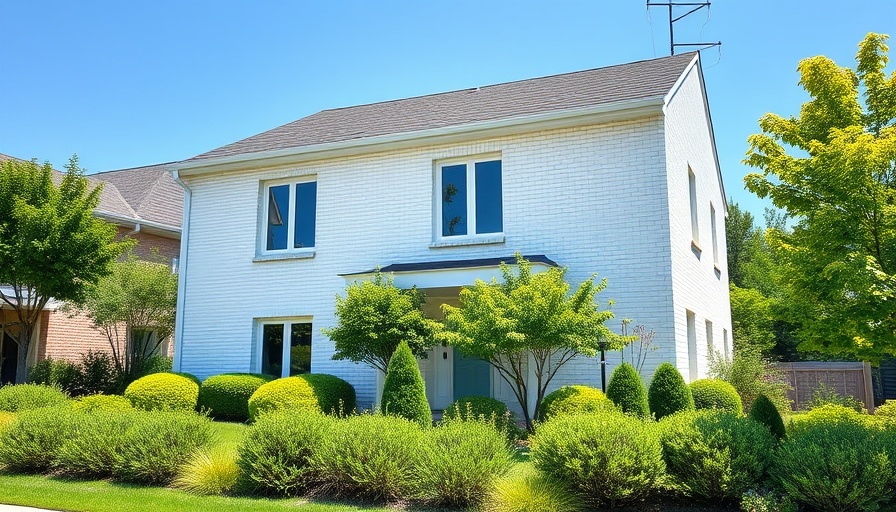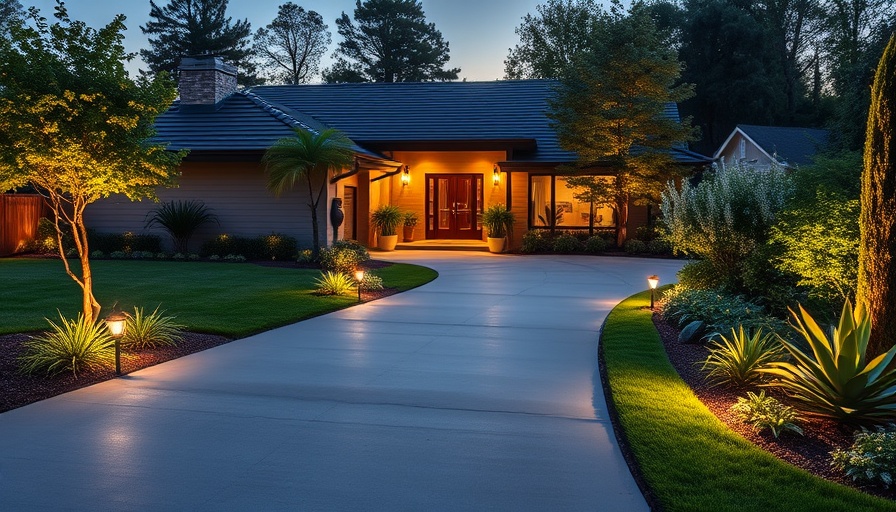
Reviving a Treasure: The Art of Restoration
In the ever-evolving world of home design, the journey that Marta Ordovás Lladó undertook to transform her 1950s Madrid home serves as a vivid example of how restorative practices can breathe life into spaces long considered outdated. Marta's renovations reflect not just a change in aesthetics but align seamlessly with the ideals of sustainability. By preserving original structures while incorporating contemporary enhancements, she beautifully illustrates how historic homes can undergo transformations that respect their soul while allowing them to serve modern needs.
Heritage Meets Modernity
Ordovás's renovation philosophy of "change everything without changing anything" resonates strongly in today's architectural climate, wherein homeowners prioritize sustainability and character. Throughout her home, vintage pieces and family heirlooms are carefully curated. This allows her to maintain a strong connection to the past while successfully infusing modern design elements. For environmentally conscious homeowners, this balance promotes a profound appreciation for historical narratives—reflecting a more sustainable approach to modern living.
The Infection of Color: Brightening Up Spaces
One of the most striking features of Marta's design are the color choices. The once dark and segmented layout has transformed into a bright, welcoming environment filled with vibrant hues. Designers Laia Cervelló and Miguel Fernández-Galiano from Nula.Studio led this vibrant palette, utilizing techniques that incorporated the unique characteristics of the house, suggesting that color is not merely for aesthetics but serves a purpose in elevating spaces. For those interested in home design, looking to color strategically can open up small or dim areas, infusing life into forgotten corners of your living space.
Lessons for Homeowners: Restorative Design Strategies
Drawing on the principles observed in Ordovás's project, homeowners looking to incorporate resource renewal can adopt several strategies:
- Material Honest: Utilize existing materials where possible, as demonstrated with the restoration of the original wooden floors. This not only highlights the home's history but also minimizes waste—a key aspect of sustainable living.
- Curate Meaningful Decor: Furnish your home with items that tell your story. Like Marta’s family heirlooms, each piece should serve as a conversation starter that reflects environmental and personal values.
- Embrace Open Spaces: When redesigning, aim for open spaces that encourage light and flow, demonstrating that an open concept can maintain the integrity of historical architecture while offering a modern relaxation space.
Looking to the Future: Sustainability in Home Innovation
As homeowners become more eco-conscious, anticipating changes in how future homes will be constructed and designed is crucial. The ongoing integration of technology in home building opens the door for sustainable practices to become standard. Marta’s home is a case study for homeowners looking to embrace or retrofit sustainable features into their own dwellings. With recent innovations in green materials and energy-efficient designs, it’s an exciting time to be part of a conscious community.
Conclusion: A Call to Dream Big
Just as Marta Ordovás Lladó realized a vision from her childhood, homeowners everywhere are reminded that they, too, can transform their living spaces into personal havens that reflect their values. Instead of opting for quick fixes or trends, consider the beauty in integration—melding modern needs with historic reverence. The challenge of home design speaks to the second nature of living sustainably, creativity, and being in touch with your environment.
Explore your own dream renovation. Embrace the charge of revitalizing your space while keeping sustainability as a guiding light. It's time to let your home tell your story, just like Marta's beautifully restored sanctuary.
 Add Row
Add Row  Add
Add 



Write A Comment